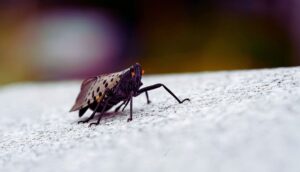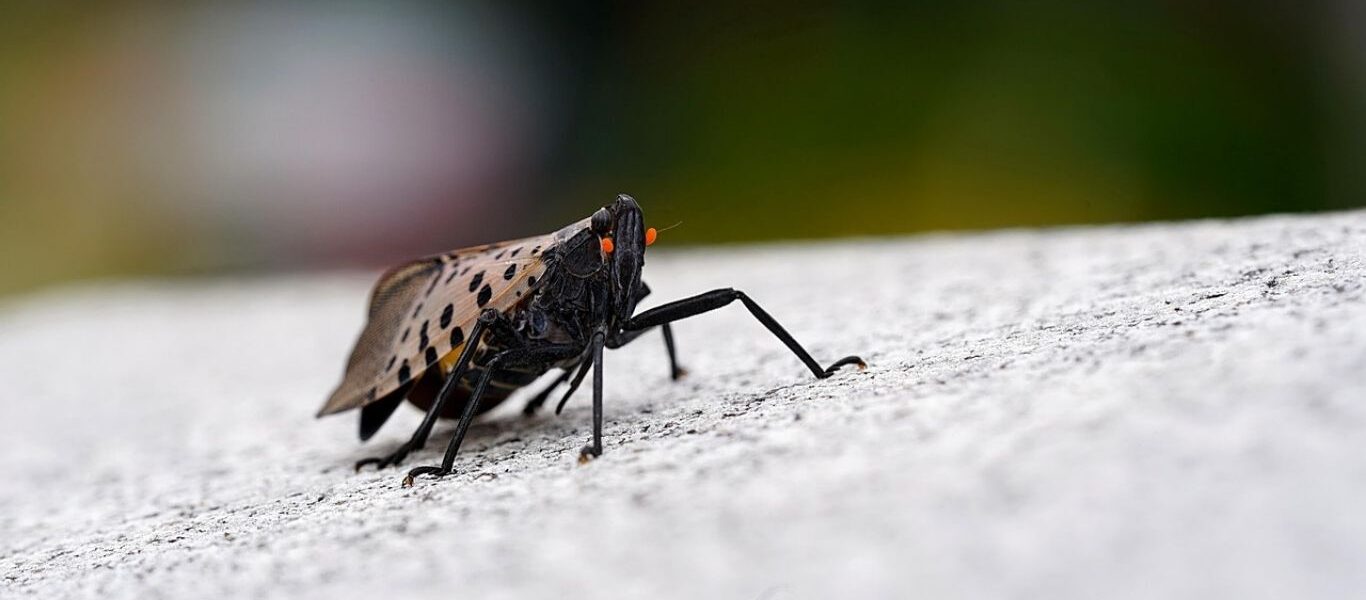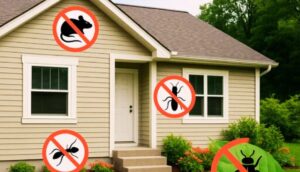Eco-Friendly Ways To Beat The Bug

If you’re here, chances are you’ve seen those red-winged, spotted insects wreaking havoc on your trees and plants. Spotted lanternflies (Lycorma delicatula) are beautiful but incredibly destructive. Since arriving in the U.S., these pests have become a nightmare for homeowners, gardeners, and farmers alike.
But here’s the good news: Mother Nature has her own way of fighting back—with native predators. By attracting these helpful species to your yard, you can reduce lanternfly numbers naturally, without harsh chemicals.
In this guide, we’ll explore the top lanternfly native predator solutions, how to encourage them, and why this approach is a smart, sustainable strategy.
Why Native Predator Solutions Matter
Most pest control methods rely on sprays and traps. While they work, they can also harm beneficial insects and wildlife. Native predator solutions take a different route. They work with nature, not against it.
Instead of wiping out everything in your garden, you attract the right creatures to eat the pests. No runoff. No residue. Just a healthy, balanced ecosystem.
Even better? Once these predators are part of your garden, they stick around, offering long-term protection against lanternflies and other bugs.
Top Native Predators That Eat Lanternflies
Let’s break down the native predators known to eat or attack lanternflies and their eggs. You may already have some in your backyard!
1. Praying Mantises
These stealthy hunters are voracious eaters. Praying mantises will eat almost anything smaller than them, including lanternfly nymphs and adults.
-
✅ Tip: Don’t buy mantis egg cases from stores—they often contain non-native species. Instead, encourage local ones by planting tall grasses and shrubs.
2. Chickens and Guinea Fowl
Your feathered friends love bugs. Chickens and guinea fowl have been spotted gobbling up lanternflies in infested areas.
-
✅ Tip: If you’re in a rural or semi-rural area, free-ranging poultry can help keep lanternfly populations in check.
3. Wheel Bugs
These are a type of assassin bug, and they’re fierce predators. Wheel bugs pierce lanternfly nymphs and feed on their internal parts.
-
✅ Tip: Wheel bugs thrive in areas with diverse insect populations. Limit pesticide use to keep them safe.
4. Spiders
Many common garden spiders catch lanternfly nymphs in their webs. Orb weavers and wolf spiders are especially helpful.
-
✅ Tip: Don’t knock down webs or kill spiders—many are silent warriors in your fight against pests.
5. Birds (Like Blue Jays and Chickadees)
Though not all birds eat lanternflies, some have started adding them to their menu as they adapt to this new invasive bug.
-
✅ Tip: Plant native trees and shrubs to attract insect-eating birds. Provide clean water and skip the pesticides.
6. Bats
Nocturnal but powerful, bats feed on many flying insects, including lanternflies. While studies are still ongoing, anecdotal evidence shows they’re helping.
-
✅ Tip: Install a bat house near your garden or wooded area to invite these nighttime bug-zappers.
7. Wasps (Like Paper Wasps)
Paper wasps are known to feed their larvae lanternfly nymphs. They don’t usually bother humans unless provoked.
-
✅ Tip: Avoid destroying paper wasp nests unless they pose a threat. These insects can actually help you.
How To Attract Native Predators To Your Garden
Now that you know who your allies are, how do you invite them to stick around? Follow these simple steps to create a predator-friendly habitat.
✅ 1. Ditch The Pesticides
Pesticides don’t just kill pests—they can wipe out beneficial insects and poison your garden’s food chain. Use natural alternatives like neem oil if you must spray.
✅ 2. Plant Native Vegetation
Native plants provide the right food and shelter for native predators. They attract insects that support birds, spiders, and wasps.
-
Example plants: Milkweed, goldenrod, bee balm, and oak trees.
✅ 3. Provide Water Sources
Birds, bats, and even insects need water. A birdbath, small pond, or shallow dish can encourage wildlife to visit and stay.
✅ 4. Create Shelters
Brush piles, tree bark, tall grasses, and even old logs provide safe spaces for spiders, wheel bugs, and mantises.
✅ 5. Keep A Light Touch On Landscaping
Let parts of your garden grow wild. Avoid mowing or trimming everything too short. Wildlife needs space to hide and hunt.
Timing: When Predators Are Most Effective
Predators are most helpful during the lanternfly life cycle’s early stages, especially when the bugs are nymphs. Eggs hatch in spring, and that’s your first opportunity to strike.
-
Spring: Birds, spiders, and mantises feast on tiny nymphs.
-
Summer: Wasps and wheel bugs attack growing nymphs and adults.
-
Fall: Chickens and birds continue eating adults before they lay more eggs.
The key is consistency. Make your garden welcoming year-round, and your predator army will stay ready.
Additional Tips To Support Predator-Based Control
While native predators do an amazing job, combining methods gives better results. Here are some smart additions:
-
Scrape egg masses: Each lanternfly egg mass can hatch 30–50 bugs. Destroying them in winter helps your predators stay ahead.
-
Sticky traps (with guards): If you use tree traps, protect non-target animals like birds and squirrels by adding guards or using circle traps.
-
Lanternfly vacuuming: Use a handheld shop vac for live adults. It’s oddly satisfying and highly effective.
Environmental Benefits Of Predator-Based Control
Using native predators isn’t just about saving your plants. It also protects:
-
Pollinators, like bees and butterflies
-
Soil quality, by avoiding toxic runoff
-
Birds and mammals, by preserving the food chain
You’re not just solving a lanternfly problem. You’re building a thriving mini-ecosystem.
10 FAQs About Lanternfly Native Predator Solutions
1. What are native predators of the spotted lanternfly?
Common predators include praying mantises, spiders, chickens, birds, wheel bugs, and certain wasps.
2. Do birds really eat spotted lanternflies?
Yes, birds like blue jays and chickadees have been seen eating lanternflies, especially after adapting to their taste.
3. Are praying mantises effective against lanternflies?
Yes! They are opportunistic feeders and will eat lanternfly nymphs and sometimes adults.
4. Can chickens reduce lanternfly populations?
Definitely. Chickens and guinea fowl will eat both nymphs and adult lanternflies if they roam near infested areas.
5. How do I attract wheel bugs to my garden?
Create a pesticide-free habitat with plenty of native plants and insects. Wheel bugs follow their food.
6. Will spiders naturally control lanternflies?
Spiders can trap and eat nymphs, especially orb-weavers with large webs.
7. Are there any risks in relying on predators?
Not really. But predator control is slower and best used with other methods for faster results.
8. Should I still remove egg masses if I’m using predator control?
Yes. Reducing the next generation gives your predators a better chance to keep up.
9. Do bats help control adult lanternflies?
They might. While research is ongoing, bats eat many flying bugs and likely help at night.
10. Can I buy predators like wheel bugs or mantises?
It’s better to attract native species than introduce non-native ones. Focus on building the right habitat.
Conclusion: Let Nature Work For You
The spotted lanternfly is a tough pest—but it’s not unbeatable. By leaning into native predator solutions, you can manage infestations naturally and sustainably. Whether you’re relying on chickens, spiders, birds, or wheel bugs, every garden visitor plays a role.
Instead of spraying and praying, build a backyard ecosystem that fights back. You’ll protect your plants, help your local wildlife, and do your part in restoring balance to the environment.
So, why not start today? Plant a few natives. Skip the pesticide. Add a birdbath. And let nature get to work on your lanternfly problem—one bite at a time.
Like This Post?
Be sure to check out our other eco-friendly pest control tips at BugOffControl.com. Share this guide with a fellow gardener and help spread the word—natural lanternfly control is not only possible, it’s powerful.










This article does a great job of outlining various natural solutions, but it leaves me wondering about the long-term effectiveness. For example, how long does it typically take to establish a robust enough predator population to make a significant impact on a large lanternfly infestation? And is there a risk that introducing certain predators, like chickens, could have unintended negative consequences for the native ecosystem?
I’m happy to help. Remember that biological control can take some time to take full effect due to the population that needs to be built up. In severe pest infestations, it is best to use chemicals that work faster to achieve complete control. I should not, because chickens use these insects as a food source should not have any negative impact on the ecosystem.